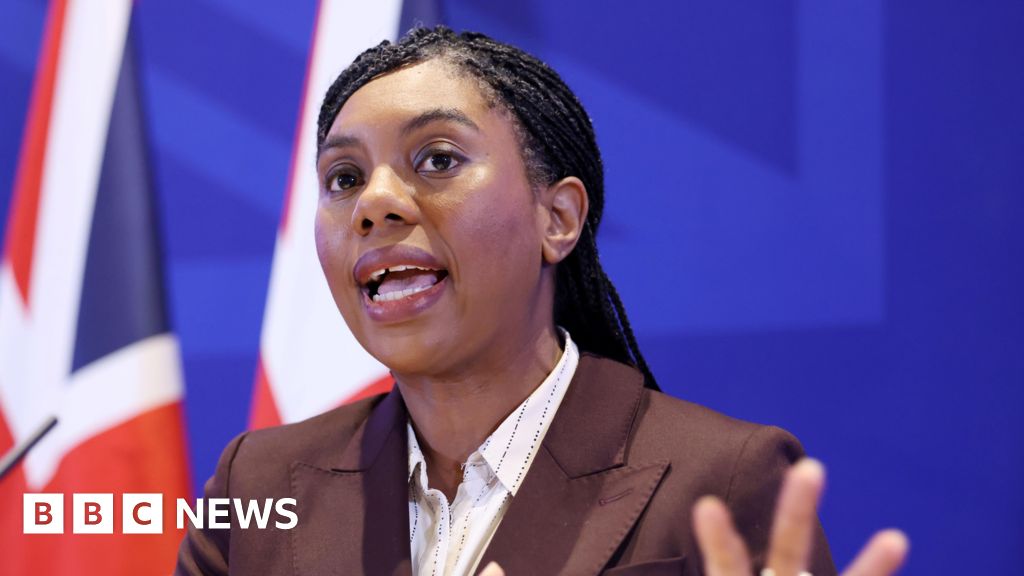
Threads was built to topple Twitter. Meta thinks it still can.
- Science
- July 3, 2024
- No Comment
- 141
The next four months will test that theory.
Built hastily to capitalize on the turmoil of Musk’s Twitter takeover, Threads attracted millions of users overnight as celebrities, politicians, Instagram users and corporate brands flocked to the simple, text-based app. For a heady moment, it looked poised to challenge or even topple the bird site as the world’s virtual water cooler.
Threads is still growing, with Meta CEO Mark Zuckerberg announcing Wednesday morning that it added some 25 million active users in the past three months. Yet it remains a fraction of the size of X.
Mosseri is betting that people — and the advertisers that have long made Meta products lucrative — are hungry for a platform that offers up-to-the-minute news and commentary about celebrities, sports teams and fashion trends, absent the headache of political debate.
The goal, he said in a recent interview, is to create “a less angry place for people to share their ideas.”
That feel-good mentality was on display last week at VidCon, the annual convention for online video content creators in Anaheim, Calif. Meta hosted a sprawling “Creator Cafe,” with free coffee and pastries for influencers willing to listen to its pitch for using Threads. On Thursday, the company held a Threads birthday celebration, cutting into a frosted chocolate cake festooned with black ribbons and the Threads logo on top.
Between bites, creators said they’re enjoying the platform, not as an alternative to X — which they mostly didn’t use anyway — but as a low-stakes alternative to Instagram.
Sohee Carpenter, a fitness influencer with over 639,000 followers on Instagram and under 100,000 on Threads, said she finds Threads “much more relaxed.”
The appeal of influencers to Instagram users is well-established. The question is whether their posts prove as compelling to users of a fast-paced, text-heavy platform like Threads.
“Threads doesn’t have a fully formed identity,” said Jasmine Enberg, VP and principal analyst at Emarketer, a market research firm. To thrive in the long run, she said, “It needs a community and a purpose that isn’t just cross-posting from Instagram.”
When Threads launched on July 5, 2023, it entered an increasingly crowded field of would-be Twitter replacements. From wonky Mastodon to edgy Bluesky, Twitter refugees tried — and mostly discarded — a series of upstart alternatives.
Backed by the world’s mightiest social media giant, Threads quickly lapped the field. It signed up more than 100 million users in its first five days, thanks to a built-in network of people to follow from sister app Instagram, including comedian Ellen DeGeneres, Rep. Alexandria Ocasio-Cortez (D-N.Y.) and singer Selena Gomez. But as the novelty wore off, the app’s growth stalled.
Musk said in May that X had 600 million monthly active users, which would make it more than three times Threads’ size. But some independent analysts have found X has been shrinking rather than growing since Musk bought it in October 2022. Emarketer estimates X had about 56 million users in the United States at the end of 2023, compared with 29 million for Threads — a gap it expects Threads to narrow in 2024.
Mosseri said Threads’ growth isn’t the result of a single bold move. Rather, he attributed it to expansion in overseas markets — especially Japan, Taiwan and Vietnam — some continued attrition from X and a steady stream of new features and updates from his fast-moving team. The app has also matured into a full-fledged X alternative, sprouting a chronological “following” feed, an edit button, search features, trending hashtags and a desktop version with customizable feeds (though not private messaging).
While those features were crucial to meeting the needs of Threads’ “most passionate users,” Mosseri said, they aren’t the ones to “move the needle” of growth or engagement. “The most successful ones are the least sexy,” he said.
Those include behind-the-scenes improvements to the ranking algorithm Threads uses for its default “For You” feed, which some users have criticized for serving them posts they don’t like. Mosseri said Threads is getting better at “interest modeling” — figuring out what sorts of posts each user wants — but that “Instagram is still way better” at it.
Meta has its reasons for leaning out from politics. Americans are paying less attention to political news, according to the Pew Research Center, and trust in media brands has plummeted. The company has long said most people use platforms like Facebook and Instagram more to share updates about their lives and follow creators than to keep up with the news.
Twitter achieved cultural relevance by capitalizing on news and commentary, touting its users’ “citizen journalism” as a superior alternative to newspapers. But advertisers have long shied from the platform because of its toxicity and lackluster marketing tools. Major brands often avoid placing ads near political content, preferring to promote their products alongside less contentious topics.
Meta initially thought of Threads as an Instagram for words — a place for influencers, celebrities and ordinary social media users to share text-based updates with friends and followers. (Before it was called Threads, the team half-jokingly referred to the project as Textagram.).
But Gen Z — which gravitated to TikTok and the ephemeral photo-sharing app Snapchat — was unlikely to stick to text even for commentary. Meta says 1 in 4 Threads posts includes at least one photo.
Mosseri said he now thinks of Threads as a place not just “for conversations,” but to comment on events unfolding in real time, from sports to TV shows to natural disasters — topics that tend to grow stale if people don’t see them right away. Accordingly, Threads has twiddled the knobs on its “For You” algorithm — originally adapted from Instagram’s slower-paced system — to emphasize more recent posts.
“It’s still a little bit too slow,” Mosseri said. “But we are getting better.”
He cited a 4.8-magnitude earthquake that rattled the East Coast in April. “You know when there’s an earthquake and everyone posts, ‘Was that an earthquake?’” he said, referring to a phenomenon long associated with Twitter. “The first time that actually happened in real time on Threads, it was like, ‘OK, we’re starting to make some progress.’”
Threads has notched some limited wins in the pop-culture realm, with celebrities like Serena Williams, Cardi B and Shonda Rhimes posting regularly. Still, most stars seem content to stick with Instagram.
In April, economy-disrupting musician Taylor Swift made her debut on Threads to promote her latest album. The app invested engineering resources in the promotion, creating a specialized shimmer effect and celebratory hearts to reactions or shares of Swift-related content. The album was one of the top five Tags of the last three months, along with “PhotographyThreads, “BookThreads,” “GymThreads” and “ArtThreads,” according to the company.
Despite her 10 million Threads followers, Swift hasn’t posted on the app since April.
Mosseri acknowledged that he has struggled to articulate and defend the company’s stance on news and politics. Social media platforms — including Meta’s — have long been influential in politics and social movements, from amplifying the Arab Spring and #MeToo movements to Donald Trump’s political career.
“It’s not that we’re not interested in news,” Mosseri said. “What we don’t want to do is amplify politics,” he said, by showing posts about elections, wars or even “social issues” to users who don’t want to see those things.
For instance, showing someone a “hot take that is either very pro-Palestine or very pro-Israel” could cause problems in a number of ways, he said. Recommending that post to users who already agree with it could reinforce an “echo chamber” effect, while recommending it to users who disagree risks turning the site into “an anger factory.”
Politicians seem to have taken the hint. A Washington Post analysis turned up official Threads accounts for fewer than 100 members of Congress. And among those, there’s a vast partisan split: About 1 in 5 Democratic lawmakers posted on the app at least once in June, while just nine Republicans — or 3 percent — did the same. About 97 percent of members of Congress from both parties posted on X in June.
Meta has been cagey about how it determines which posts and accounts count as political and how it defines social issues. Spokeswoman Seine Kim said the company uses machine-learning algorithms to identify potentially political posts and accounts on Threads and Instagram so that it can avoid recommending them to people who don’t already follow those accounts. She noted that users on both platforms can change their settings to opt in to political recommendations.
For now, Threads remains content to court influencers, creators and entertainers, and Mosseri said he doesn’t expect it to fully replace X. That may leave the social media market more fractured than it was before, forcing people to use multiple networks to find the same audience and content they once had on Twitter.
But Anil Dash, a software executive who has built tools for social media developers, said the lack of a single “Twitter killer” might be healthy for the broader social media ecosystem.
“You don’t make something healthier than McDonald’s by making another fast-food restaurant,” he said. “You do it by having lots of different choices, including some fun local restaurants and good ingredients. Same goes for tech — a mix of lots of different options, some more healthy, some more mom-and-pop.”
Taylor Lorenz, Jeremy Merrill and Hayden Godfrey contributed to this report.
#Threads #built #topple #Twitter #Meta #thinks








